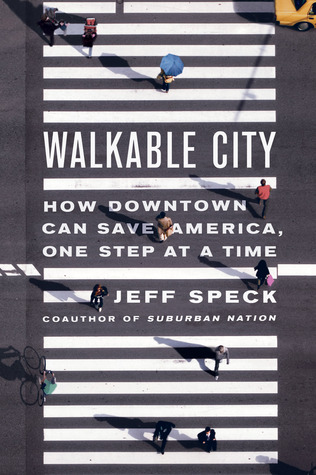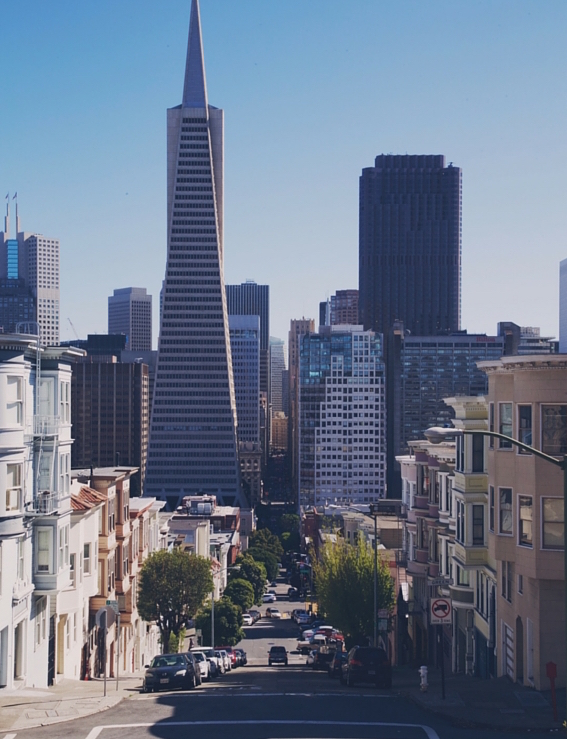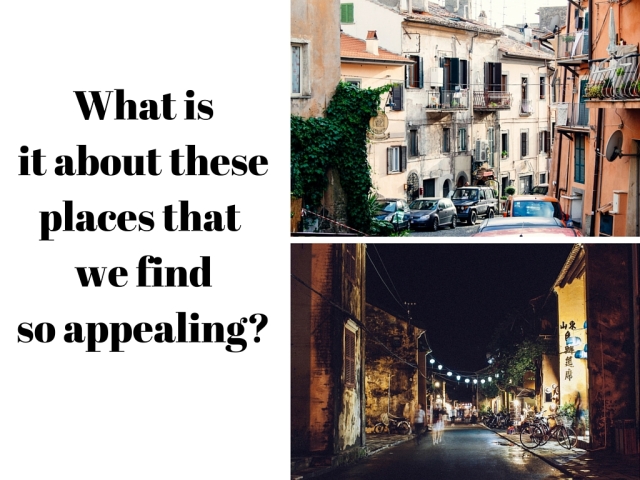America has a number of problems. Despite what he insists, Donald Trump does not know how to solve them.
I recently discovered a book that contains answers to a handful of our national issues. It unveils how to lower rates of asthma and obesity, how to decrease auto fatalities, how to pull kids away from computers and TVs, how to situate the elderly so they can thrive without assistance late into their lives, how to draw young people and new talent into struggling cities, how to reduce our dependence on foreign oil, and how to increase interaction between the poor and the upper classes.
What book could answer all these questions? What single solution could possibly address all these issues?

The answer is a book called Walkable City by an urban planner named Jeff Speck. Using extensive research from multiple disciplines, Speck makes a compelling case that making all of our towns and cities “walkable” would go a long way towards solving these problems. By walkable, he means a place where residents take daily walks that are “useful, safe, comfortable, and interesting.” Places where cars are not necessary to run errands and to go about daily life.
Can you even picture that lifestyle? Can you imagine sending your kids to school on foot, hopping down to the corner store to shop, and not driving to work? Me neither.
I am not the only one who found this book revelatory. Popular blogger Modern Mrs. Darcy says this about Walkable City: “This is the book I can’t stop talking about….Speck reveals how our spaces shape our behavior, whether or not we’re aware of it. Pragmatic, relevant, and completely fascinating.”
I agree. Although the book could be called Introduction to Urban Planning 101, it could also be cross listed as Solving America’s Problems 201 and Improving Your Life 302. This book is about both the personal and the policy.
Speck brings together extensive research by medical, economic, and demographic researchers and his own experience as an urban planner in dozens of towns over many years. He says we can fix the problems our urban planning created after World War II, one town at a time, one mayor and city engineer at a time. All our cities could have the interest and vibrance of San Francisco and Manhattan.

We don’t have to move to downtown Chicago, Portland, or other pricey hit cities. The places where most of us live–Cleveland, Phoenix, Des Moines, and Downers Grove–can be made far more enjoyable and much more thriving. The key to this is making them walkable. As a country, we don’t have to settle for most cities being like Dallas and Detroit with overly quiet centers that are surrounded by suburbs that are poised to go belly up if the economy takes another hit.
Like me, you may be surprised by what the research actually shows on a number of topics. For instance, wide roads with good sight lines do not make for safer streets. In fact, the opposite is often true. And did you know that adding lanes to busy roads and highways makes no dent in traffic congestion?
Also, the key to drawing people into neighborhoods and town centers is not to commission stand-out pieces of architecture or to put in pretty, brick walkways. And if you want people to drive less, the answer is not necessarily to add a bike lane to every street or to make massive investments in new public transit.
Our country has besetting health issues, economic troubles, and never-ending sprawl. Jeff Speck has convinced me that part of the answer lies in how our towns and cities work.
What makes a town truly walkable? Why are most young adults flocking to places with vibrant street life? What are the economic benefits to being a walkable town or city? How does the built environment around me affect how I feel about my life? How can I help my kids be healthy and be independent? What does it cost to keep driving-only towns afloat? How on earth do we convert our existing cities and suburbs to being pedestrian-friendly? And what is the cost–to our health, to our economy, to the earth–if we don’t?
Speck begins to answer all of these questions in Walkable City.
I am never going to be an urban planner, but I do want Americans to be healthy, our towns to be sustainable, and our economy to be strong.
I believe in the importance of this book for our country. At my request, the publisher has agreed to send copies to three of my readers whom I choose. If you want a chance to win one, please comment below. Respond to anything in this post or answer one of these questions, What do you like about your neighborhood? Or What is your favorite place that you’ve lived? You have until Saturday, January 30th at noon EST to enter the contest. I will pick the winners out of a hat after that.
Have you ever wondered:

© Laura Goetsch and Thinking About Such Things, 2016
————————————–
Update: Congratulations to Carolyn, Cat, and Susan! You each won a copy of the book. My apologies to everyone else.

My favorite place I’ve ever lived was in the Lincoln Square neighborhood of Chicago.
We chose to live in an apartment that was a bit more expensive than we wanted because the location was too perfect. We had three supermarkets, including an amazing Mariano’s, within walking distance of our place. There were all sorts of cafes and restaurants right out our front door. There was a public square where parents let their kids run around together. There were about three or so parks within walking distance as well.
This changed how we lived. The only time I drove was when I had to travel up to the suburbs to attend class in seminary once a week.
Now we live in Omaha, and things are incredibly spread out. We happen to live in an area where we happen to be able to walk to a newer part of town that has a park and all sorts of eateries, but the culture is completely different. People never think about walking to get places. They just hop in their car, even to go right down the street.
The difference is huge, and it impacts the lifestyles and health of everyone.
The more walkable our cities are, the better. I actually believe there was a recent TED Radio Hour that mentioned this as well. Thanks for sharing.
LikeLike
I bet Jeff Speck could make even Omaha more like Lincoln Square!
There is SO MUCH we lose when our lives revolve around driving.
LikeLiked by 1 person
Sounds like a very interesting conversation in this book–thanks so much. When I think back to living in both Kathmandu and NYC, walk-ability was something I really enjoyed. It brought a new level of paying attention. And, interestingly, the time was simply factored in…it takes 45 minutes to walk there? That’s when I’ll leave. These days I would consider a 45-minute drive considerable (and not “local”) and am stretched to get in a 20-minute walk, so I think both my sense of paying attention and my perspective on time are compromised by so much driving. I was recently walking around our neighborhood and realized how little I know of the people who live even 10 houses down…a five-minute walk away. Realistically, even moving 1/4 mile down the road would change my functional community.
LikeLike
Isn’t it interesting how our sense of time is skewed by our driving lifestyles?
We know our neighbors, our neighborhoods, and our worlds so much better when we move through them at a truly human pace, that of walking. We whiz past (and lose) so much as we drive everywhere.
LikeLiked by 1 person
My husband and I dream of retiring from Texas (possibly the least walkable state) to my mom’s neighborhood in Florida. The top draw: you can walk to a coffee shop, grocery store and drug store in one direction. In the other direction, you can loop around the golf course and neighborhood for exercise. But what do I like about my current neighborhood? Although Texas is not known for walkability, our city has built a great hike/bike trail. As soon as the trail was finished on the edge of my neighborhood, my neighbors were out walking. The trail even makes it easier for the kids in our neighborhood to walk to the junior high.
LikeLike
That biking/hiking trail sounds like it’s moving your town in the right direction. Being able to send kids out on their own and being able to run into neighbors out and about are huge.
LikeLike
One thing I like about my current neighborhood is the amount of sidewalks and access to greenways. I just wish the sidewalks connected you to more businesses, rather than going to either parks or more residential areas. We tend to vacation in much more walkable cities, and every time we travel, I find myself telling my husband that we need to move to that city because while I do enjoy walking for its own sake, practical walking is that much better.
LikeLike
My husband and I have the exact same conversation every time we vacation in a more walkable place! There’s something just so satisfying about being able to walk to do your daily business.
LikeLike
I am so interested in reading this book after your description, Laura! I lived in Cadiz, Spain for a year after college (teaching English to elementary schoolers), and had to do so much walking to get everywhere that I lost ten pounds over the course of the year, so I am already a believer in the health benefits of living in closer quarters (not that weight is always an indicator of health…but you know what I mean!)
I had to walk to get groceries, to get to the train for work, to meet up with friends, to go to the post office, everywhere. I had to commute to the next town over for work, and I loved the built-in quiet time in the morning on the train. I could read a book, listen to a podcast…do almost anything but stress about traffic – if I made it to the train on time, I made it to work on time. Plus, I got a great view of the ocean as we traveled the isthmus between Cadiz and San Fernando. Pretty sure I’ll never have a view like that again on my commutes!
Our current situation doesn’t make walking as aesthetically appealing as it is in European towns (we live on a very busy wide-road street), but we are within walking distance of a grocery store, post office, several restaurants and a coffee shop (Starbucks…not my favorite, but it’s still coffee. in a shop.). One thing we are missing is being within walking distance of a park. We have some open green space, but no playgrounds.
LikeLike
I know what you mean about your current walking opportunities not being “aesthetically appealing.” That’s something that Speck addresses in the book – people have to want to walk and what the area looks and feels like makes all the difference in that. No one wants to walk on a busy, wide road; that’s part of the reason they are a problem.
LikeLike
I’ve been interested in this one ever since I MMD talking about it as a guest on someone’s podcast. Sounds fascinating!
LikeLiked by 1 person
I grew up in SUBURBIA on the east coast, however our neighborhood was very walk-able. We could walk to a drug store, bakery, and a score of other stores. There was county park land at the end of the street with a beautifully playable creek. There was even a pedestrian overpass that allowed us to walk to the YMCA. It was incredible, and I absolutely took it for granted.
None of the places I have resided as an adult have quite measured up. Though I did love walking to the library and city park when we lived in Wickliffe. In Virginia we had a cow pasture between us and the most walking path-laden neighborhood in town. It was great for Dan, who could ride his bike to campus on bike paths, but it was difficult to brave the cows with the kids.
LikeLike
(First off, congratulations on working the phrase “brave the cows” into your comment!)
One of the things I liked about this book is that it showed me that life in suburbia can indeed be walkable (like where you grew up). Speck knows what kind of fixes are needed to transform all sorts of towns.
LikeLike
In seattle, we have had the amazing burke gilman trail at our backdoor and in our most recent apt, the grocery store is less than 5 min away. It’s a totally different life than suburbia nashville. People find it hard to understand why I would choose a preschool 5 miles away b/c it is “so far”. Of course, it does rain a lot but that doesn’t stop wayne from biking to work 95% of the time.
LikeLike
The trick is for the rest of the country to become more like Seattle since most of us will never be able to afford living there! This book convinced me it’s possible.
LikeLike
We live in a walkable neighborhood, as you know. The sad part is: We still drive a lot due to time constraints. I hate it. I wish I’d already read this book, as I’m attending a meeting tonight to discuss child saftey concerns regarding a proposed renovation to make our downtown more walkable.
LikeLike
Yes, I was surprised by what actually makes streets and intersections safe for pedestrians.
LikeLike
Where’s my favorite place to live? Where I live now, of course! We have a beautiful little blue house with an enviable address, right next to the tracks, which our little boys love to pieces, and 7 blocks from an amazing campus. It’s in a dicy part of town which keeps things hopping and interesting. In low-income neighborhoods everyone’s outside all the time, so it’s easy to meet people. Our overhead is low. Our neighbors are friendly. We live 50 feet from our downtown Liberty Street with lots of shops and stores and a beautiful library. And most important of all, it’s the first place I’ve ever lived with my husband and our 4 children. No place will ever compare for that reason alone. 🙂
LikeLike
Sounds lovely! 🙂
LikeLike
My hometown was quite walkable, and I know that isn’t always the case regardless of the size (my town had less that 3,000 people in it). The phrase “it’s only a mile” described the distance from daycare to school and home to my parents’ business, respectively. It bummed me out to later live in places I couldn’t walk, but I was always healthier and happier when there were neihhborhoods and parks I ciuld go to to safely stroll and explore.
LikeLiked by 1 person
I love our current neighborhood and town SO MUCH but by far the most walkable place we’ve lived was in Denver. We both drove to work (and the mountains!) but literally everything else was walkable: our church, multiple grocery stores and restaurants, an enormous and impressive library, and a seemingly endless array of parks and recreation activities. We felt so connected to the community there, and I’m guessing the walkability piece played a large part in that.
LikeLiked by 1 person
Sounds amazing.
LikeLike
I made the deadline! My favorite place to live was definitely in the North End of Boston. Boston in general is a very walkable city, but my work at the time was a short walk away, and with so many great bars/restaurants + friends nearby + all of the history.. it was a great place to live in my early 20s. I didn’t even mind being in a 4th floor walkup. When C was a baby we lived in another Boston neighborhood, Jamaica Plain, which was also walkable. I met many so many other moms with strollers for walks around the local pond and parks.
We did sacrifice some walkability when moving back to A2 but when looking for houses a requirement was within walking distance to school and biking distance to ice cream — so at least we still have that 🙂
LikeLike
Thank you to everyone who entered the give-away. Congratulations to Cat, Carolyn, and Susan on winning a copy of the book!
LikeLike